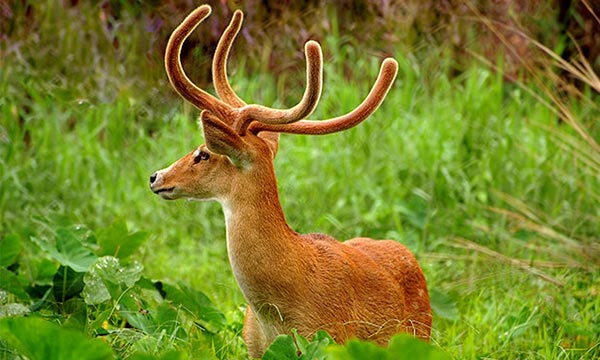Related Wildlife Species Founds in India
Lorem ipsum dolor sit amet, consectetuer commodo ligula eget dolor
Aenean massa Cum dis parturient montes.
Change language

Location :Anini, Arunachal Pradesh
Coverage area : 4149 sq km
Main attraction :
Best time to visit :November and April
Nearby excursions :
Nearby cities :Anini
Nestled in the beautiful valleys of Arunachal Pradesh, Dibang Wildlife Sanctuary is one of the eight sanctuaries located nearby Anini district in the state. Established in 1980s, the Dibang Wildlife Sanctuary occupies part of the Eastern Himalayas, and is a massive spread of lofty mountains, snow covered peaks, deep gorges, lush forests and glistening rivers adding to the beauty which is abundant in natural beauty, adventurous expeditions,
flora and fauna.
House to a variety of flora and fauna, this sanctuary is one of the major tourist attractions and a popular bio-diversity hotspot. It is a must-visit spot in Arunachal Pradesh that blooms with enough scopes to discover nature to its closest and to keep the adrenalin rush high with nature safaris. Credit to its rich natural endowment, some of the rarest of mammals, birds and florasinhabit the region with full bloom.
The Dibang Wildlife Sanctuary is in Arunachal Pradesh, located in north east of Anini. It has been named after the Dibang River, a tributary of Brahmaputra River. The Dibang Wildlife Sanctuary lies adjacent to the Mouling National Park, and was declared as one of the major bio-diversity hotspots of the world by UNESCO in 1988. The Eastern part of the Himalayas consists of Eastern Tibet, the Yamana province of South China, Hainan the Northern part of the Indo-China, Burma and northern part of Thailand.
Ranging between the altitude of 1800m and 5000m, the sanctuary is spread across an area of 4149 sq km covering a topology of complex rugged terrain hills which are steep to very steep in altitude. The demographic variation can be spotted in the forms of mountains with snow clad peaks, deep and narrow gorges, dense forests and luxuriant rivers flowing by.
The sanctuary region experiences extreme freezing temperatures in the winter, accompanied by snowfall of nearly 6m to 10m depth. The rainfall, too, is heavy from south west and north east monsoons. Summers are mostly hot and exhausting with temperature ranging between 18 degrees and 30 degrees. On that note, winters are freezing with temperature falling to subzero.
The best season to visit Dibang Wildlife Sanctuary is during the winter season between the months of November and April before the south west monsoon commences from May to October resulting in complete shutdown of all activities. Summer time in the Dibang valley is extremely hot and exhausting, and hence must be avoided for any visit during the months of March to June.July welcomes monsoon season in the Dibang valley and continues till September. Though no tourists are allowed to visit during the monsoons, heavy rainfall makes the sanctuary area look wonderful.
Nature has blessed the Dibang Wildlife Sanctuary with its best of flora, fauna and avifauna. The flora is mainly ruled by the vegetation of temperate and alpine type. The two main types of vegetations in this region are temperate broad leaved forest and temperate conifer forest. Alpine vegetation occurs at higher altitude with herbs, stunted trees and dwarf bushes. A stretch of bright colored gregarious flowering can be spotted during the months of May and June for a short time.
Coming to the fauna, it is a pure bliss to witness a huge range of species of the same family existing together in the same place. Rare mammals like Mishmi takin, red goral, two species of musk deer, red panda, Asiatic black bear, tiger and Gongshanmuntjac are among the major attractions of the sanctuary. A flying squirrel, named Mishmi Hills Giant Flying Squirrel is among the latest one to have been discovered and spotted at the edge of this sanctuary.
The avifauna of Dibang Wildlife Sanctuary is equally interesting with around 190 species of birds found in the region. Some of the most widely spotted birds are the rareSclater'sMonal and Blyth's tragopan, along with Japanese Bush Warbler, Temminck?sTragopan, and Rufus Tailed Babbler to name the rarest ones.
The Eastern Himalayan ecosystem houses a number of frog species, almost 45 species of moths, butterflies and numerous insects. Reptiles too are found in abundance with Cobra, Krait, Indian Rock Python and Viper among the most common ones.
Itanagar, 330 km
Tezpur, 422 km
Guwahati , 538 km
Sikkim, 753 km
Kolkata, 1058 km
Delhi, 1826 km
Chennai, 2414 km
Mumbai, 2592 km
Bangalore, 2616 km
Airways
Mohanbari at Dibrugarh is located at 40 km away from the sanctuary and is the nearest airport which has regular flight connectivity to Delhi and Kolkata
Dibrugarh is connected to Dibang Wildlife Sanctuary via Roing.
Helicopter services are also available to reach Anini by air through Arunachal Pradesh.
Railways
Roing town in lower Dibang Valley is the main commercial hub, which is nearest to Tinsukhia Railway Station.
One can avail direct bus to the sanctuary from Tinsukhia railway station.
Roadways
The route of Dibrugarh-Tinsukhia-SadiyaGhat connected by NH35 is the most recommended access to reach the sanctuary.
Bus and taxi services connect Roing town to Anini most conveniently.
Accommodation facilities
There are several private and government accommodation facilities in Anini. There are circuit houses, tourist lodges, hotels and resort facilities near Dibang Wildlife Sanctuary, which fit everyone?s budget and requirement. Forest rest houses in the sanctuary are among the best suggested options for accommodation while visiting Dibang Wildlife Sanctuary.
Things to do
Conclusion
Dibang Wildlife Sanctuary is a perfect gateway for the entire family to spend your winter vacation. The diverse demography, the variety of flora and fauna, and the pleasant climatic views are assured to woo you over.